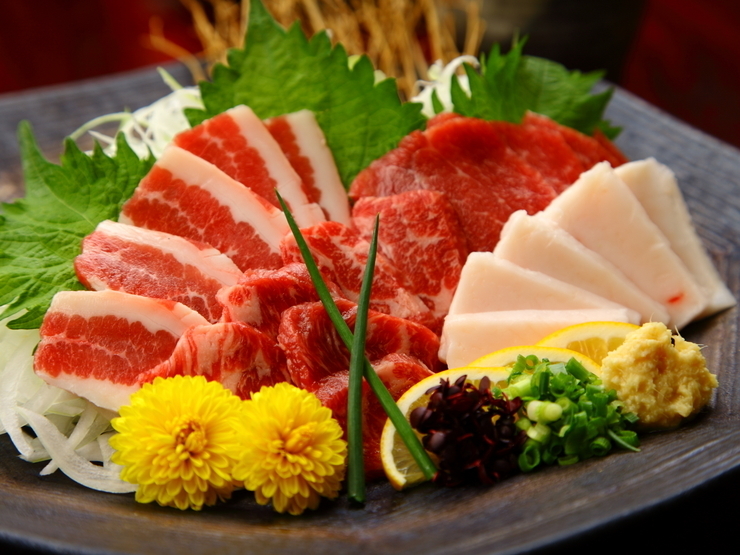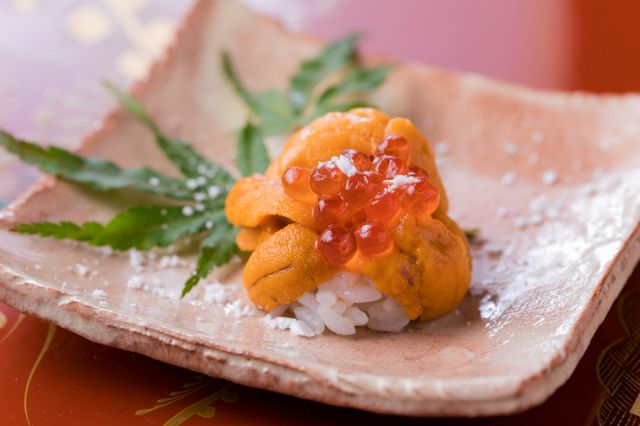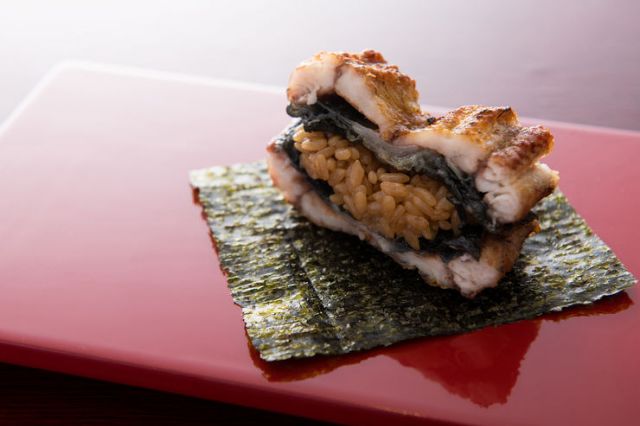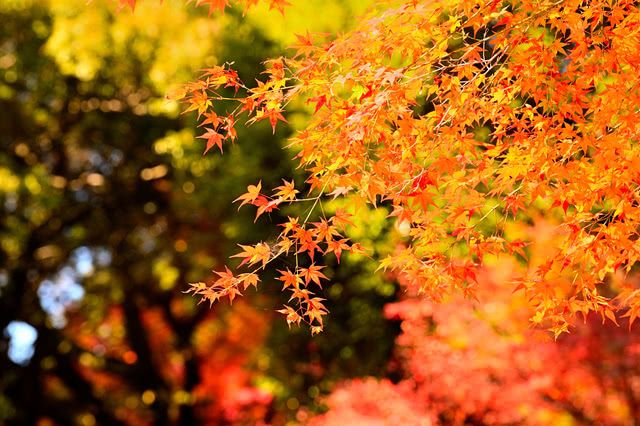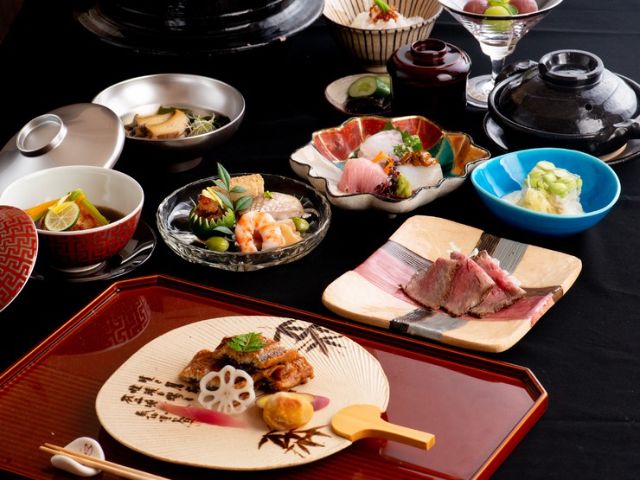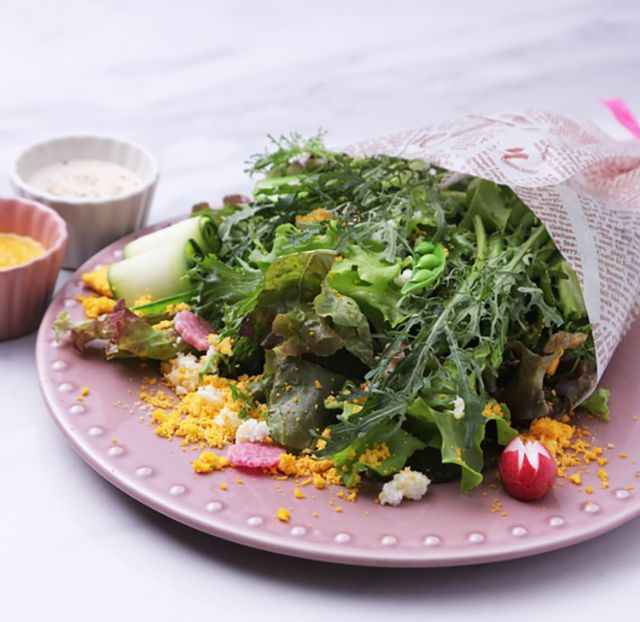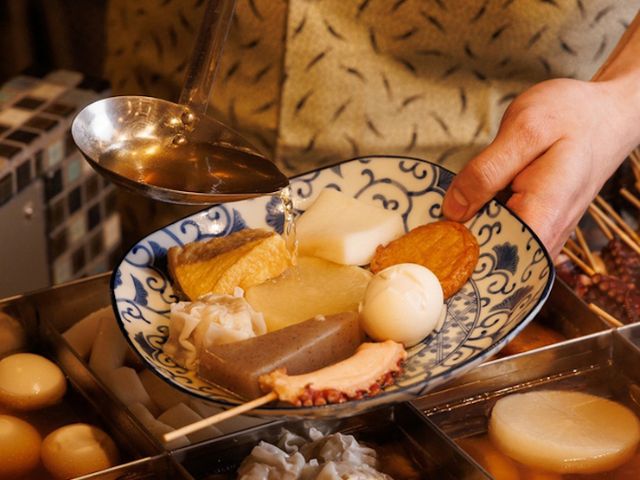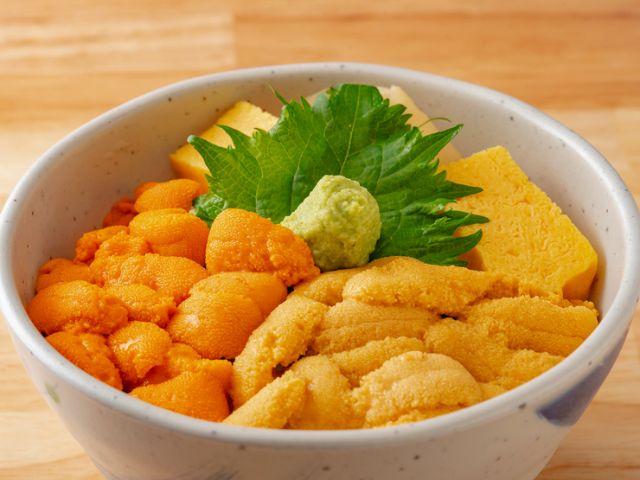View the Gorgeous Hanging Hina Dolls of Yanagawa City in Fukuoka Prefecture During Hinamatsuri!
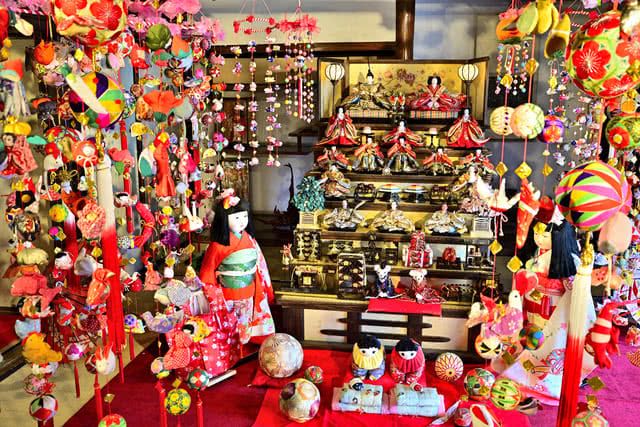
About Hinamatsuri
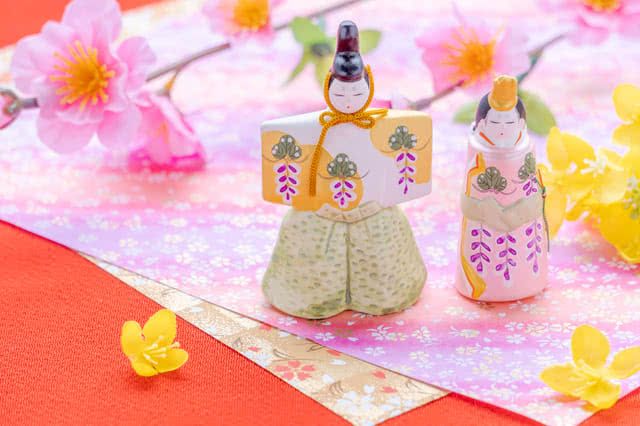
Hinamatsuri is a cultural event where hina dolls are displayed and traditional food is served to celebrate the health and happiness of young girls. It’s held on March 3 every year and is also known as Momo no Sekku (Peach Festival), as peach trees typically flower around this time.
Its origins date back to the Heian Period (794–1192), when bad luck was transferred to paper dolls that were then sent down a river to drive away harmful spirits and prevent misfortune. Since then, the dolls gradually became more lavish, and the event transformed into a custom where dolls are displayed at home to take on any bad luck that may befall a family’s daughter, as well as to celebrate the health and happiness of the child.
The Three Major Tsurushi Kazari Displays
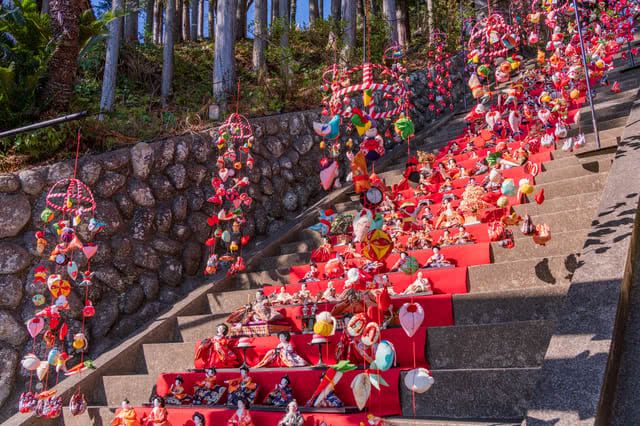
Tsurushi kazari are Hinamatsuri hanging decorations made by tying handmade dolls together with string. It is a type of hina ornament with a history dating back over 100 years. In the past, hina dolls were so expensive that only the wealthy could afford to buy them. As a result, it became a tradition in many parts of the country for people to handmake dolls from scraps of cloth or other materials and tie them together with string to create tsurushi kazari, with which they prayed for their daughters’ happiness.
Today, displays of tsurushi kazari can be seen not only in individual homes but also at Shinto shrines and other places, with the tradition having evolved over time into huge events where tourists can enjoy the gorgeous ornamentations. Tsurushi kazari from Shizuoka, Yamagata, and Fukuoka Prefectures are especially popular.
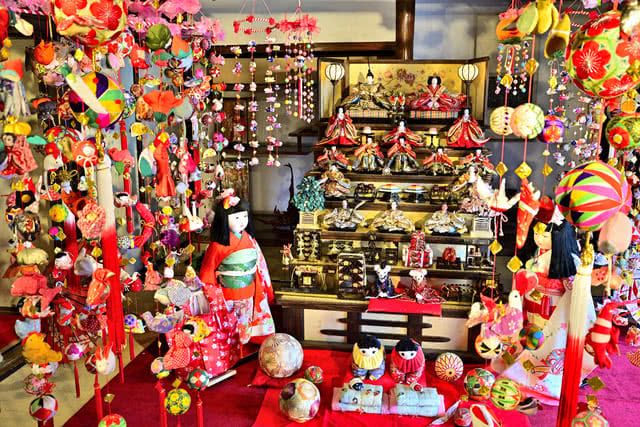
• Hinano Tsurushi Kazari Festival (Shizuoka Prefecture)
This is a famous event where hina dolls and tsurushi kazari are displayed in numerous locations around the Inatori Onsen area. A must-see among them are the decorations at Susanoo Shrine, which was built in 1617. The stunning display of gorgeous dolls on the 118 steps within the shrine grounds is also the largest hina doll exhibition in Japan in terms of the number of display tiers.
• Hina no Kasafuku (Yamagata Prefecture)
Kasafuku is a popular display of numerous dolls hanging within red umbrellas of various sizes within the great hall of Sanno Club, a luxury traditional Japanese restaurant in Sakata City that is also registered as a tangible cultural property of Japan. One display umbrella actually holds 999 dolls! The hina decorations are all handmade by local women.
• Sagemon (Fukuoka Prefecture)
The beautiful hanging decorations known as Sagemon adorn tourist spots and shops throughout the city of Yanagawa during Hinamatsuri. Hina dolls are placed on hinadan* while a variety of small handcrafted decorations, such as Yanagawamari balls made of brightly colored string, are strung up all around them.
*Tiered platforms for displaying hina dolls.
About the Yanagawa Area
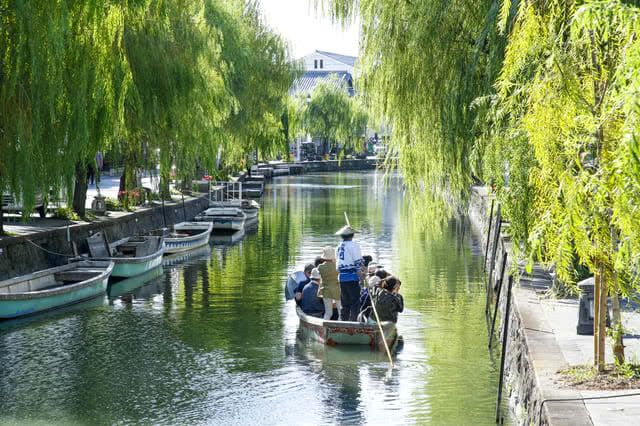
Yanagawa in Fukuoka Prefecture, where the Sagemon is held, is a popular tourist spot located just 1 hour by train from Hakata, which itself is a hit with domestic and foreign visitors as well as a great destination for a fun day trip.
• What is Yanagawa like?
Yanagawa is located in the south of Fukuoka Prefecture and is referred to as a “city of water” due to the many canals that crisscross the city. It flourished as a beautiful castle town during the 1600s, and today it is home to many historic sites, lovely landscapes, and cultural properties dating back centuries.
• What to do in Yanagawa?
1. River Boat Tours
A popular tourist activity, these are paid canal rides on boats that move along the waterways at a leisurely pace. During them, passengers can enjoy views of the weeping willows swaying in the wind, the retro townscape, seasonal plants and flowers, as well as the boatman's charming stories and songs he uses to delight visitors while skillfully piloting the boat using a bamboo pole.
2. Discover the city on a rental bicycle.
Rental bicycles that are available for 500 JPY a day are recommended for seeing the city by exploring the paths along its canals as well as the city’s backstreets. Rental bikes are available at Nishitetsu Yanagawa Station and the Okinohata area, where the river boat rides end.
Enjoy the Outstanding Local Food of Yanagawa and Hakata!
Fukusensou (Yanagawa / Unagi)
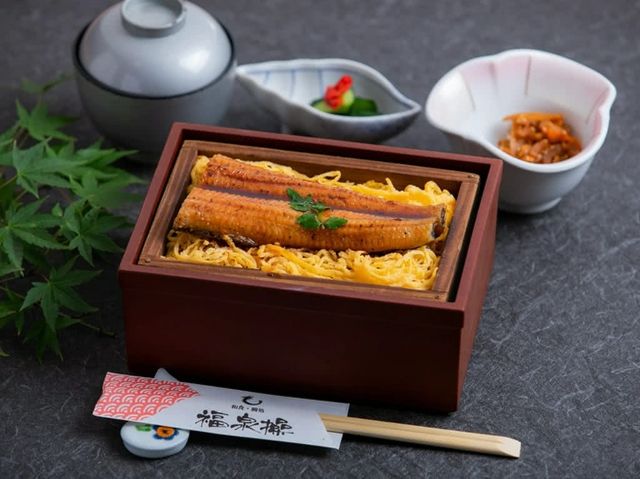
The mouths of Yanagawa’s rivers, where fresh water mixes with sea water, were full of unagi (freshwater eels) more than 200 years ago. Today, wild unagi is hard to come by, but eel continues to be a specialty of Yanagawa, where apparently a million unagi are eaten every year.
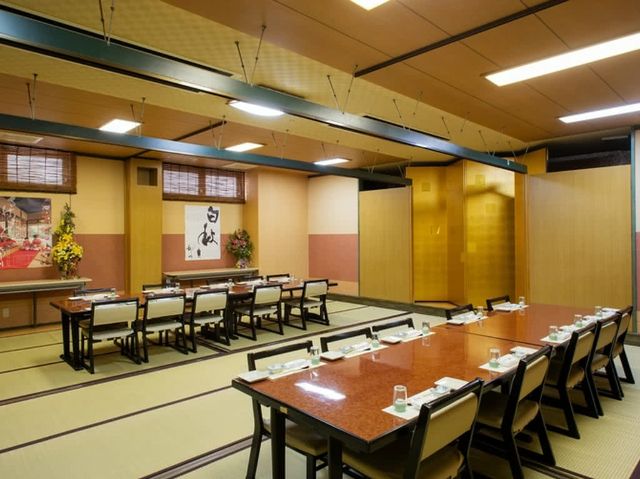
There are many unagi restaurants in the city, but Fukusensou is one of the most famous. Try their [Eel Seiro (Regular)] (3,520 JPY) made from unagi that has been dipped in a secret sauce and grilled over charcoal to a fragrant aroma, and then steamed in a seiro (bamboo steamer) with white rice mixed with the same secret sauce and kinshi tamago.* The steaming process makes the unagi meat fluffy and enhances the flavor of the white rice that has soaked up all the richness of the eel. The restaurant is in a convenient location, just one minute by foot from Nishitetsu Yanagawa Station.
Fukusensou
Closed: None
Average price: [Dinner] 3,500 JPY
Access: Right in front of the west exit of Yanagawa Station on Nishitetsu Tenjin Omuta Line
Address: 31-1, Shimohyaku-cho, Mitsuhashi-machi, Yanagawa-shi, Fukuoka Map
More Details Reservation
Mentai-ryori Hakata Shobo-an (Hakata / Japanese Cuisine)
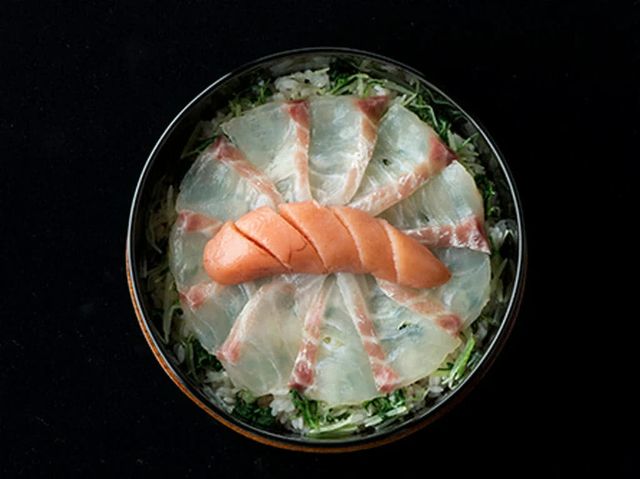
At this restaurant, you can enjoy casual home cooking made with ingredients that Hakata is famous for, such as mentaiko (spicy cod roe). Their menu includes plenty of dishes with agodashi mentaiko, made from mentaiko marinated in a sauce of agodashi* and other ingredients such as Japanese mustard.
*Dashi stock made from dried flying fish.
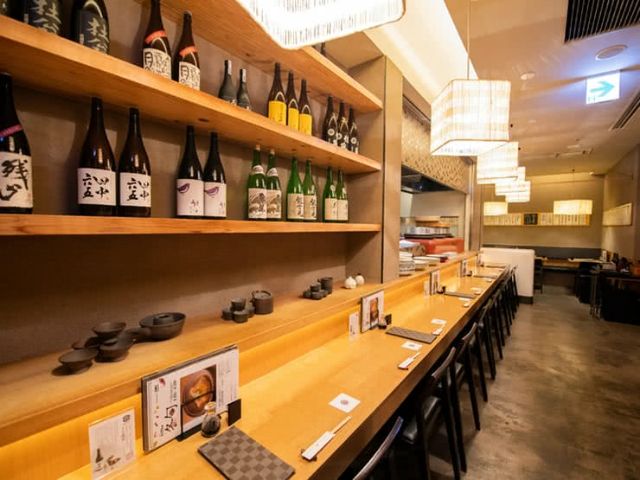
The most popular menu item is the [Hakata Mentai Mabushi] (2,900 JPY), a dish of freshly chopped mustard greens, sea bream sashimi distinguished by its delicate sweet flavors, and agodashi mentaiko served on freshly cooked white rice. The recommended way of eating it is by first squeezing a little lemon on it and taking a few bites, then mixing it with egg yolk dashi tororo*1 and enjoying that, and finally making it into a dashi chazuke*2. This way, it’s like getting three dishes in one!
*1. Fresh egg yolk mixed with grated mountain yam and seafood dashi.
*2. Hot agodashi broth was poured over the rest of the dish.
Mentai-ryori Hakata Shobo-an
Closed: None
Average price: [Dinner] 4,000 JPY / [Lunch] 1,500 JPY
Access: Directly-connected to JR [Hakata Station]! On the 9th floor of JR HAKATA CITY AMU PLAZA HAKATA
Address: 1-1 Hakataeki Chuogai, Hakata-ku, Fukuoka city, Fukuoka Map
More Details Reservation
Disclaimer: All information is accurate at time of publication.
Thank you for reading our article.
Our goal is to take your culinary journey to the next level by helping you find the best restaurant. With SAVOR JAPAN, you can search and make reservations for
the Japanese Cuisine restaurants found in and around Fukuoka that fill your needs.
Discover more Japanese Cuisine restaurants by area
- Tokyo Area
- Near Tokyo
- Kyoto and Osaka Area
- Hokkaido Area
- Northern Honshu (Tohoku)
- Central Honshu (Chubu)
- Western Honshu (Chugoku)
- Shikoku
- Kyushu
- Okinawa and Ryukyu Islands
Discover more restaurants to eat Japanese Cuisine by area
Related Articles
New Articles
Categories
Cuisine
- Bars (23)
-
Japanese Cuisine (676)
- Kaiseki (46)
- Nabe (19)
- Okonomiyaki (24)
- Shabu Shabu (36)
- Soba (17)
- Sushi (137)
- Tempura (18)
- Teppanyaki (46)
- Shojin Ryori (3)
- Tonkatsu (12)
- Kushiyaki (10)
- Yakitori (46)
- Sukiyaki (35)
- Japanese Cuisine (341)
- Oyster (2)
- Sashimi/ Seafood (19)
- Unagi (eel) (30)
- Motsu Nabe (offal hotpot) (6)
- Mizutaki (chicken hot pot) (3)
- Oden (8)
- Kaisendon (seafood bowl) (9)
- Udon (2)
- Taverns(Izakaya) Cuisine (125)
- Western Cuisine (42)
- Italian/French Cuisine (95)
- Yakiniku/Steak (224)
- Chinese Cuisine (26)
- Ramen (Noodles) Cuisine (26)
- Cafe/Sweets (60)
- Other Asian Cuisine (5)
- Global/International Cuisine (7)
- Alcohol (45)
- Other (11)
Area
- Shikoku (10)
- Kyoto and Osaka (345)
-
Tokyo (460)
- Tokyo (286)
- Ginza (44)
- Roppongi (22)
- Shibuya (26)
- Shinjuku (47)
- Asakusa (20)
- Ebisu (12)
- Tsukiji (10)
- Tokyo Landmarks (4)
- Ueno (24)
- Akihabara (9)
- Ikebukuro (12)
- Jiyugaoka, Denenchofu, Nakameguro (9)
- Shimokitazawa (4)
- Kichijoji (3)
- Tachikawa (1)
- Omotesando, Harajuku, Aoyama (18)
- Akabane (1)
- Kagurazaka (4)
- Akasaka (10)
- Odaiba (1)
- Tsukishima, Harumi, Toyosu (3)
- Near Tokyo (100)
- Okinawa and Ryukyu Islands (58)
- Hokkaido (124)
- Northern Honshu (Tohoku) (31)
- Central Honshu (Chubu) (144)
- Western Honshu (Chugoku) (32)
- Kyushu (92)
Archives
- December 2025(9)
- November 2025(4)
- October 2025(3)
- September 2025(6)
- August 2025(11)
- July 2025(19)
- June 2025(18)
- May 2025(34)
- April 2025(43)
- March 2025(30)
- February 2025(36)
- January 2025(26)
- December 2024(69)
- November 2024(31)
- October 2024(15)
- September 2024(39)
- August 2024(65)
- July 2024(31)
- June 2024(54)
- May 2024(61)
- April 2024(28)
- March 2024(31)
- February 2024(42)
- January 2024(32)
- December 2023(20)
- November 2023(5)
- October 2023(11)
- September 2023(7)
- August 2023(18)
- July 2023(8)
- June 2023(8)
- May 2023(18)
- April 2023(15)
- March 2023(1)
- January 2023(1)
- April 2022(2)
- March 2022(2)
- February 2022(1)
- January 2022(1)
- July 2021(1)
- March 2021(1)
- February 2021(1)
- December 2020(1)
- October 2020(1)
- September 2020(2)
- August 2020(10)
- July 2020(6)
- June 2020(9)
- May 2020(11)
- April 2020(8)
- March 2020(8)
- February 2020(13)
- January 2020(9)
- December 2019(24)
- November 2019(8)
- August 2019(14)
- July 2019(15)
- June 2019(18)
- May 2019(17)
- April 2019(16)
- March 2019(22)
- February 2019(22)
- January 2019(26)
- December 2018(34)
- November 2018(40)
- October 2018(32)
- September 2018(11)
- August 2018(8)
- July 2018(6)
- June 2018(9)
- May 2018(10)
- April 2018(21)
- March 2018(74)
- February 2018(39)
- January 2018(26)
- December 2017(60)
Keywords
- Omakase
- Accessible
- Affordable
- All-You-Can-Eat
- Amazing Scenery
- anime
- Art
- Autumn
- Awards
- Beer Gardens
- Breakfast
- Chef Recommendations
- Cherry Blossoms
- Chinese
- Close To Station
- Condiments
- Counter
- Coupon
- Crab
- Culture
- Dassai
- Dates
- delivery
- Early Summer
- Editor's Recommendation
- English Available
- Event
- Expo
- Fall Leaves
- Family-Friendly
- Famous Restaurant
- Famous Tourist Spot
- Fast Food
- festival
- fireworks
- Flower Farm
- Free Wi-Fi
- French
- Great Location
- Guide
- Hibachi
- hotpot
- How To
- hydrangea
- Hygiene
- Illumination
- Italian
- Izakaya
- Japanese
- Japanese alcohol
- jingisukan
- Kaiseki
- Kappo
- Kushiage
- Kushikatsu
- Kyoto
- Late-Night
- Lunch
- Manners
- matsusakagyu
- Michelin
- mizutaki
- Model Course
- monjayaki
- motsunabe
- Mt.Fuji
- Multilingual Menus
- Nabe
- Narita Airport
- New Year
- Ninja
- Noodle
- Oden
- Okonomiyaki
- omotenashi
- Onsen
- Osaka
- Osaka Station
- Photogenic Site
- pizza
- PR
- Private Room
- Ramen
- ranking
- Recipe
- Regional Cuisine
- Resort
- Rice Bowl Dish (Donburi)
- sacred places
- Sake
- Sakura
- Sashimi
- sea urchin
- Setouchi Area
- Shabu Shabu
- sightseeing
- Signature Dish
- Soba
- Solo Diners Welcomed
- Spicy Food
- Spring
- Steak
- Summer
- Sunflower
- Sushi
- takeout
- Teppanyaki
- Terrace Seating
- Tokyo
- Tokyo Experiences
- Tokyo Skytree
- Tokyo Tower
- unagi
- UNESCO
- Vegan
- Vegetarian
- Wagyu
- What Popular Gourmet Sites Recommend
- Whisky
- Wine Bar
- Winter
- Wisteria
- Workshop
- World Heritage Site
- World Writers
- Yakiniku
- Yoshoku
- Yuba
- Zen
Discover Restaurants By Area
-

Tokyo Area
Japan's largest city, Tokyo, is the center of culinary culture in Japan. Countless Tokyo restaurants serve every kind of food imaginable and the Toyosu fish market keeps restaurants stocked with the nation's finest fish.
-

Near Tokyo
Coastal areas, mountains and valleys surrounding Tokyo are bursting with tourist destinations, such as hot springs and ski slopes, where many unique foods are only available locally.
-

Kyoto and Osaka Area
The cities of Kyoto and Osaka, together with their surrounding areas, have greatly influenced Japan's culinary culture since the 7th Century. The region is renowned for its entertainment, Kobe beef, and wide-ranging traditional dishes.
-

Hokkaido Area
The island of Hokkaido is home to wide-ranging produce of the finest quality, such as rice, meat, vegetables, fish and fruit. Popular dishes from Hokkaido include robatayaki (food slowly roasted on skewers) and Sapporo miso ramen.
-

Northern Honshu (Tohoku)
The northern end of Japan's main island, Honshu, is renowned for its seasonal fruit and vegetables, nation-leading harvest of fish (especially tuna from Ohma), and delicious beef from Yonezawa, Sendai and Yamagata.
-

Central Honshu (Chubu)
Chubu is in the center of Japan's main island, Honshu, and its culinary culture reflects its position between Japan's western and eastern halves. Delicious Hida beef, world-famous Mount Fuji and many acclaimed sake breweries are in Chubu.
-

Western Honshu (Chugoku)
Chugoku, on the southwest of Japan's main island, is rich with diverse produce. Many of its products are praised as Japan's best, including Matsuba crabs from Tottori and oysters from Hiroshima. Its pears and muscats are also top grade.
-

Shikoku
The mild climate of Shikoku is ideal for growing citrus fruit such as sudachi. Shikoku is also famous for Sanuki udon noodles, huge yields of tiger prawn from Ehime Prefecture and the best torafugu (tiger globefish) in the country.
-

Kyushu
Western culture was first introduced to Japan through Kyushu, Japan's third largest island, where the influence of Portuguese and other western cuisine influenced the creation of a colorful culinary tradition.
-

Okinawa and Ryukyu Islands
Okinawa, Japan’s southernmost prefecture, is a treasure trove of distinctive dishes and drinks that have become popular throughout Japan, including Okinawa soba, unique sushi toppings and Awamori distilled liquor.
